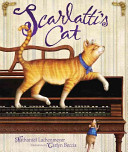2018 School Spending Survey Report
Scarlatti's Cat
illus. by Carlyn Beccia. 32p. Carolrhoda. Mar. 2014. RTE $16.95. ISBN 9780761354727; ebk. $12.95. ISBN 9781467724012. LC 2013018648.
COPY ISBN
Lachenmeyer takes an anecdote about the inspiration for eighteenth-century Italian composer Domenico Scarlatti's "The Cat's Fugue" and runs with it, imagining self-satisfied kitty Pulcinella as a brilliant composer in her own right--who's just waiting for her chance to play Scarlatti's off-limits harpsichord. The illustrations, which humorously show composer and cat with matching pompadours, are unevenly executed.
ALREADY A SUBSCRIBER? LOG IN
We are currently offering this content for free. Sign up now to activate your personal profile, where you can save articles for future viewing




Be the first reader to comment.
Comment Policy:
Comment should not be empty !!!